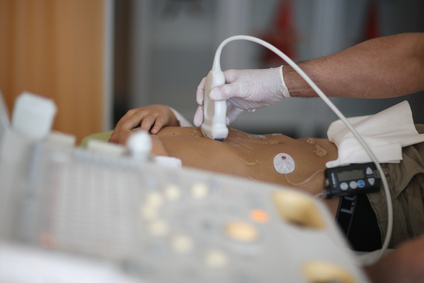 Systematic screening for abdominal aortic aneurysm (AAA) targeting all men over 65 years old (not just those presenting risk factors) was associated with a drop in the mortality rate specific for this disease, according to the Swedish Nationwide Screening Program.
Systematic screening for abdominal aortic aneurysm (AAA) targeting all men over 65 years old (not just those presenting risk factors) was associated with a drop in the mortality rate specific for this disease, according to the Swedish Nationwide Screening Program.
While 667 men were examined for AAA, the number of patients who required treatment to prevent premature death due to aneurysm rupture was merely 1.5.
Such amazing treatment efficacy justifies screening despite the relatively low prevalence of this disease.
Randomized studies showed that screening through ultrasound followed by preventive surgery can reduce associated mortality in selected populations, but such a selection differs by location. This is, precisely, the novelty in this study: no selection was made; all men over 65 years old were studied.
In this registry, of 302,957 men who received an invitation to be screened, 84% finally accepted, a very high percentage.
AAA was detected in 1.5% of men, 29% of which underwent preventive surgery over a mean follow-up of 4.5 years.
Mortality at 30 days was significantly lower for endovascular treatment compared to open surgery.
Endovascular treatment: 0.3%
Open surgery: 1.3%
(p <0.001)
There was a significant reduction in mortality (4%) per year of screening (p = 0.02).
From 2000 (before the introduction of screening) to 2014, associated mortality dropped from 74 to 45 patients every 100,000 subjects.
Conclusion
Systematic screening for abdominal aortic aneurysm in men over 65 years old is highly cost-effective and reduces mortality associated to aneurysm rupture.
Original title: Outcome of the Swedish nationwide abdominal aortic aneurysm screening program.
Reference: Wanhainen A et al. Circulation 2016; Epub ahead of print.
We are interested in your opinion. Please, leave your comments, thoughts, questions, etc., below. They will be most welcome.





